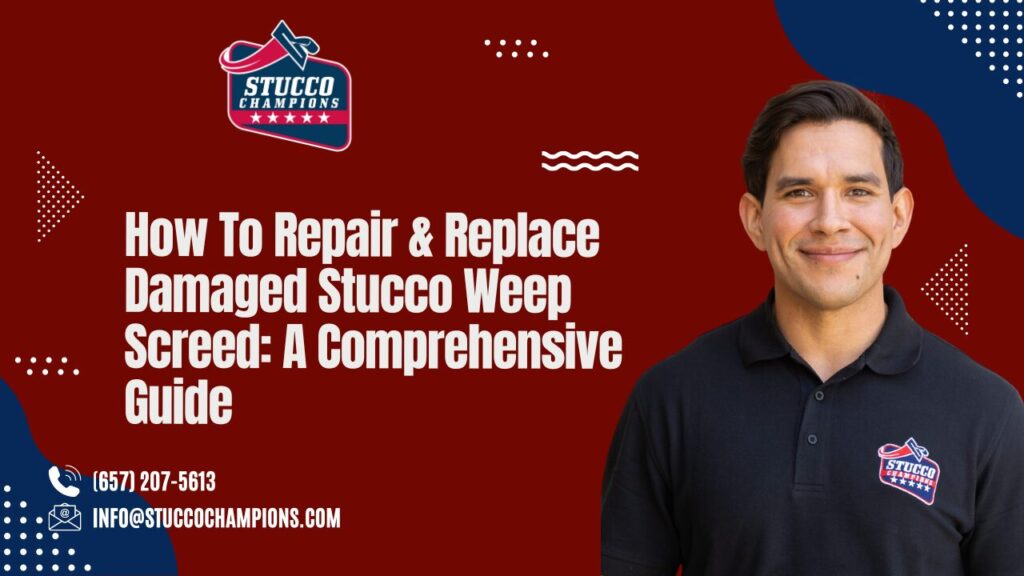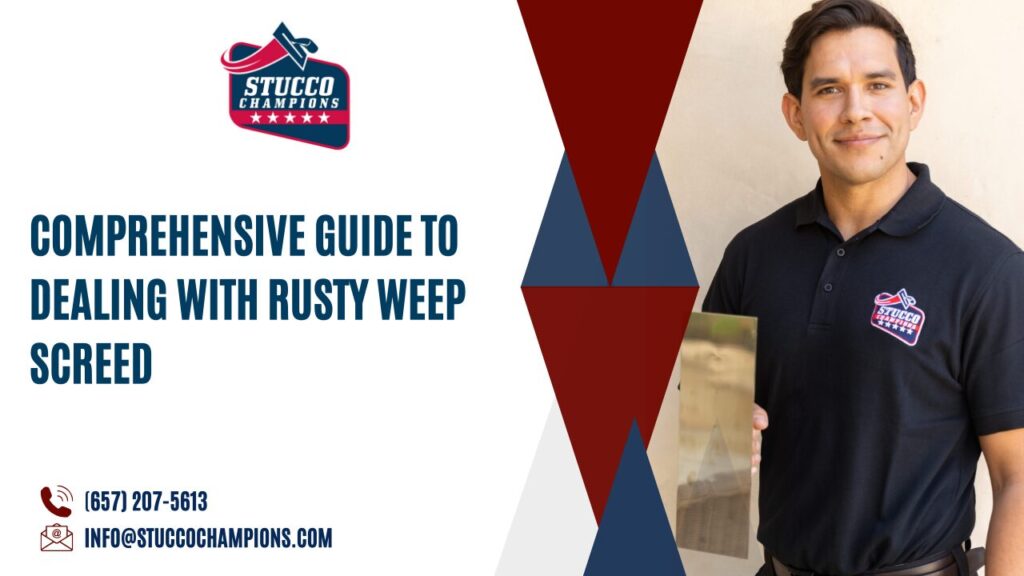Stucco weep screed repair and replacement is an essential aspect of maintaining the integrity of a stucco system. This comprehensive guide is crafted by an individual with substantial experience in stucco repair, although their professional qualifications are not explicitly stated. The aim is to provide accurate, transparent, and valuable insights for both novices and those adept at DIY projects, emphasizing the importance of safety and the potential need for professional consultation in complex scenarios.
Understanding Stucco Weep Screed
The weep screed is a critical component located at the bottom of a stucco wall, beneath the finish coats, base coats, wire, and paper. Its repair or replacement can be more challenging than anticipated. This guide covers both replacement of entire sections and smaller patch repairs, with the process remaining consistent regardless of the size.
Preparation and Process Overview
The initial steps involve removing a portion of the stucco, starting from the bottom edge of the weep screed, and working upwards, about 5 inches. Fasteners and wire/paper are then removed to access the weep screed. Following this, the damaged weep screed section is cut out and replaced. The process includes reattaching paper and wire, applying base and finish coats, and potentially painting to match existing colors.
1. Stucco Removal Techniques
When removing stucco, a hammer may be used, but caution is advised to prevent damage to surrounding areas. An alternative method might involve using a small chisel or oscillating tool for more precision. The goal is to preserve the underlying paper and wire while removing approximately 5 inches of stucco above the bottom of the weep screed.
2. Handling Fasteners and Cutting Wire/Paper
After stucco removal, the next step is to carefully remove all nails, staples, and other fasteners. Cutting the wire and paper requires precision, leaving enough material on each side for overlap during the repair process. Tips for ease include taping the paper to the wall in an upright position for better access.
3. Cutting and Replacing Damaged Weep Screed
Using tin snips or an angle grinder, cut out the damaged weep screed section. Safety precautions, such as wearing eye and hand protection, are paramount. The new piece should be slightly longer than the gap to allow for overlap, ensuring a secure fit.
4. Reattaching Paper and Wire
In this step, new paper and wire are installed. Pieces should be cut to overlap existing materials, and caulking applied to fuse old and new sections seamlessly. This step is crucial for waterproofing and structural integrity.
5. Applying Base Coat: A Cautious Approach
While pre-mixed base coats are generally recommended for small patches, their suitability can vary depending on specific circumstances. It’s important to mix the base coat to the right consistency and apply it carefully, ensuring it keys into the existing stucco structure. Patience is required to allow the base coat to set appropriately before proceeding.
6. Finishing Touches: Applying the Finish Coat
The application of the finish coat should mimic the existing stucco texture. Techniques vary depending on the desired texture, with attention paid to blending the new material seamlessly with the old. This step may require multiple coats, depending on the stucco system.
7. Painting: The Final Step
Painting can be an effective method for color matching, especially for DIY projects. It’s often more feasible than trying to achieve a perfect color match with stucco materials alone.
Safety and Professional Advice
While this guide provides detailed instructions, it’s important to stress safety throughout the process, including wearing appropriate protective gear. For larger or more complex repairs, consulting a professional is highly recommended to ensure quality and safety.
This article serves as a basic guide for stucco weep screed repair and replacement. It’s important to understand the limitations of DIY approaches and when to seek professional help. The instructions provided here are based on a simulated scenario, and real-world applications may vary. This guide aims to empower homeowners with the knowledge to undertake basic repairs while emphasizing the importance of safety and professional expertise in more complex situations.
Last week, we shared Where Can I Buy Weep Screed? An Expert Guide, highlighting the best suppliers and tips for sourcing quality materials for your stucco projects. If you’re looking for reliable options to purchase weep screed, don’t miss this helpful resource!
—




